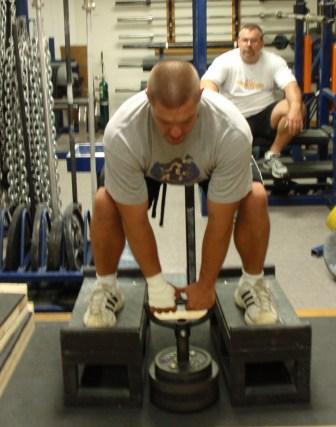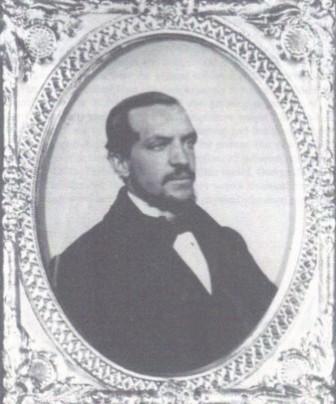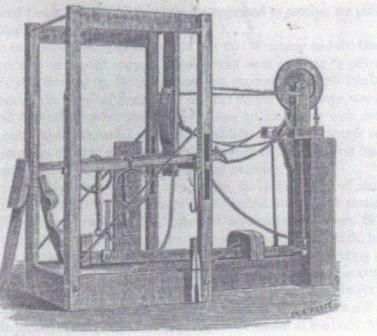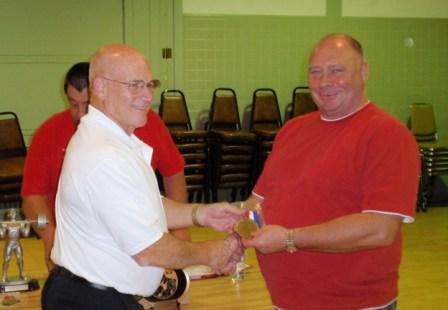Rounded Back Platform Deadlifts
by Al Myers
We have our “Big Workout Night” at the Dino Gym on Tuesday night, and usually have a large turnout of lifters. Everyone has their own workout, but it is the night to go heavy so most exercises trained involve the back and legs. Lots of squats and deadlifts! We start at 6:00 and sometimes don’t finish until 10:00 or 11:00. The last part of the workout usually involves doing exercises that help with recovery or flexibility, or more commonly referred to as “accessory exercises”. I am a firm believer in training heavy to get stronger, but at the same time don’t overlook lighter exercises as a way to supplement your heavy work. We constantly change these exercises from workout to workout as this is our way of “winding down” a hard workout. We have several back accessory exercises we do but I want to explain one that is not well known, which we call the Rounded Back Platform Deadlift. This exercise could be a great addition to your back training program.
The Rounded Back Platform Deadlift is done is this manner. First, you place a foot on two different raised platforms, and place the weight on a loader in front of you between your feet. It is best to have a loader that a handle can be attached to so weight can be added. The height of the handle should be just above the level of the feet, but not as high up on the lower leg as a loaded bar on a lifting platform. Use an overhand grip when picking up the weight, and with a bend of the knees allow the lower back to round over. When rising, stand and come to a complete lockout. Lower the weight as low as possible without allowing the weights to touch or rest on the floor. Keep constant tension on the body at all times. Perform the repetitions at a controlled pace, paying attention to keeping the proper form of rounding the back when rising up with the weight. We perform sets of 10 reps, adding weight to each subsequent set. Usually we will do between 4 and 6 sets. We rotate quickly between us and try to keep the rest minimal. This exercise is not about maximum exertion – but rather about stimulating blood flow to the lower back and legs. You will feel “the burn” in your hamstrings after performing this exercise.
The Rounded Back Platform Deadlift improves flexibility because the weight has a deep pickup that requires a good stretch. The cross-over benefits to an All-Rounder is that it will help with rounded back type lifts, such as the Zercher Lift or Hack Lift. It is also a very good exercise for Strongmen to help build strength for Stone Lifting, which is also a rounded back type of lifting.



